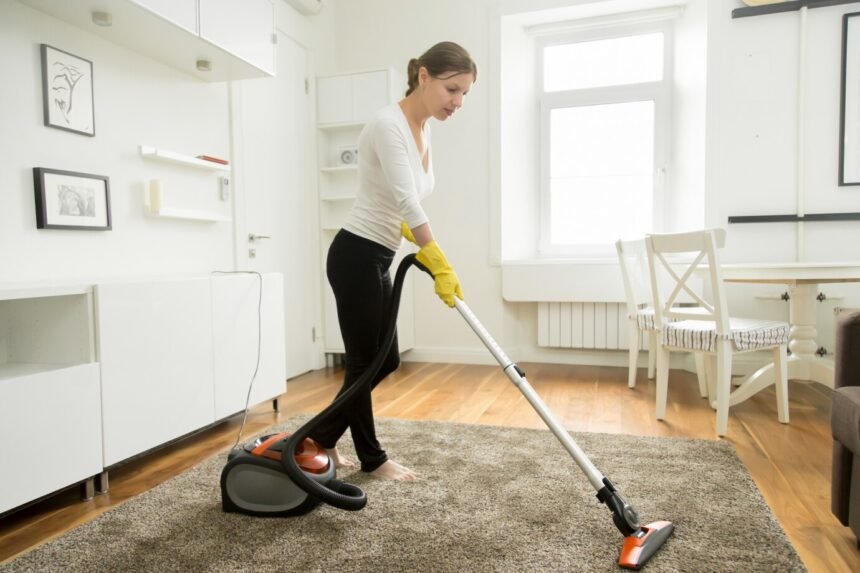Carpet cleaning is an essential aspect of maintaining a clean and healthy home environment. Carpets, with their cozy feel and aesthetic appeal, can easily accumulate dirt, dust, allergens, and stains over time. Regular cleaning not only enhances the appearance of your carpets but also promotes better indoor air quality and prolongs the life of your investment. In this comprehensive guide, we will delve into the art and science of carpet cleaning, exploring various techniques, tools, and tips to help you achieve pristine carpets that are a delight to walk on.
Understanding the Importance of Carpet Cleaning
Carpets act as a filter, trapping dust, pet dander, pollen, and other pollutants that can affect indoor air quality. Regular foot traffic can push these contaminants deep into the carpet fibers, making them difficult to remove with regular vacuuming. Over time, this buildup can contribute to respiratory issues, allergies, and other health problems, especially for individuals with sensitivities.
In addition to health concerns, neglecting carpet cleaning can lead to the deterioration of your carpets. Dirt and debris act as abrasive agents, wearing down the fibers and causing premature wear and tear. Stains left untreated can become stubborn and diminish the aesthetic appeal of your carpets. By establishing a routine carpet cleaning regimen, you can enjoy a cleaner, healthier home environment and extend the life of your carpets.
Common Carpet Cleaning Methods
1. Vacuuming
Regular vacuuming is the foundation of carpet maintenance. It helps remove surface dirt, dust, and debris before they settle deep into the carpet fibers. Aim to vacuum high-traffic areas at least once or twice a week and less frequented areas at least once a week. Use a vacuum cleaner with strong suction power and a rotating brush or beater bar to effectively lift and agitate the dirt for better removal.
2. Spot Cleaning
Accidents happen, and when they do, prompt spot cleaning is crucial to prevent stains from setting. Blot the spill with a clean cloth or paper towel to absorb as much liquid as possible. Avoid rubbing the stain, as this can spread it further. Use a carpet stain remover or a DIY solution of water and mild detergent to gently clean the affected area.
3. Steam Cleaning (Hot Water Extraction)
Steam cleaning, also known as hot water extraction, is a popular method for deep cleaning carpets. It involves spraying hot water mixed with a cleaning solution onto the carpet and then extracting the solution along with the loosened dirt using a powerful vacuum. Steam cleaning can effectively remove embedded dirt, allergens, and stains, leaving your carpets fresh and revitalized.
4. Dry Carpet Cleaning
Dry carpet cleaning methods involve using specialized cleaning compounds or powders that are spread over the carpet, agitated to attract and absorb dirt, and then vacuumed away. These methods are ideal for situations where water-based cleaning is not suitable or when minimal drying time is desired. Dry carpet cleaning can be a convenient and effective way to refresh your carpets without the need for excessive moisture.
Professional Carpet Cleaning Services
While regular maintenance can keep your carpets in decent condition, professional carpet cleaning services offer a deeper level of cleaning that can rejuvenate even the most soiled carpets. Professional cleaners have access to advanced equipment, specialized cleaning agents, and expertise to tackle tough stains, odors, and deep-seated dirt that ordinary cleaning methods may not fully address.
When considering professional carpet cleaning services, inquire about their cleaning methods, certifications, and experience in handling different types of carpets. Look for companies that use environmentally friendly practices and are transparent about their pricing and procedures. Professional cleaning can be a worthwhile investment to restore the beauty and cleanliness of your carpets and ensure a healthier indoor environment for you and your family.
Tips for Maintaining Clean Carpets
- Place doormats at entryways to reduce the amount of dirt brought into your home.
- Implement a no-shoes policy indoors to prevent outdoor contaminants from being tracked onto your carpets.
- Rotate your furniture periodically to prevent excessive wear on certain areas of the carpet.
- Use carpet protectors to shield your carpets from spills and stains, especially in high-traffic areas.
- Schedule regular professional carpet cleanings to deep clean and refresh your carpets.
Conclusion
Carpet cleaning is both an art and a science, requiring a combination of regular maintenance and periodic deep cleaning to keep your carpets looking their best. By understanding the importance of carpet cleaning, familiarizing yourself with different cleaning methods, and incorporating preventive measures into your routine, you can enjoy clean, fresh, and healthy carpets for years to come. Whether you opt for DIY cleaning or professional services, the key is to prioritize the care and maintenance of your carpets to create a welcoming and healthy home environment.











